The Barber Vintage Motorsports Museum Part 3 – With Phil Aynsley
Part Three of a tour through the Barber Museum – the Main Racing Bike Hall
Back to Part 1 – Back to Part 2

While there are numerous other racing bikes scattered throughout the museum, the majority are to be found in this area, leading up to the section of “Daytona banking” and the surrounding spaces.
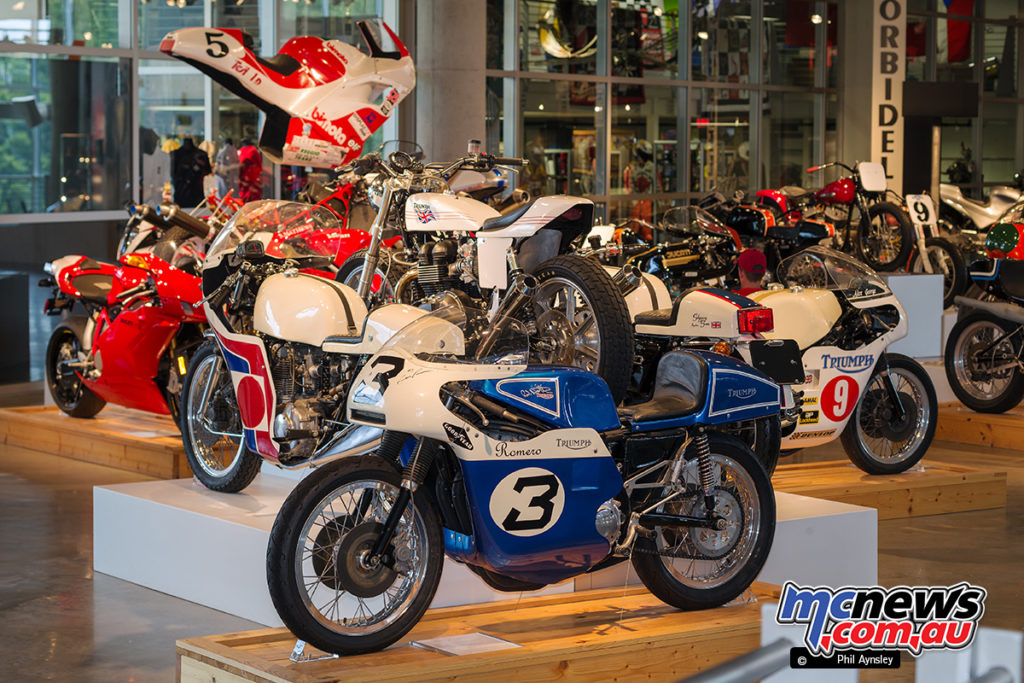


1991 Bimota Tesi 1D racer. Bimota Tesi 1Ds are rare, racing versions even more so! This is the works Tesi which was raced by journalist Alan Cathcart in 1991 and 1992. Highlights of this two year competition/development programme were victories in the 1991 Daytona Protwins and 1992 Daytona Supertwins races.
The bike is shown in later ES model guise as campaigned by Cristiano Migliorati in the 1993 Italian Sport Production Championship. Powered by a special, Bimota developed 964cc version of Ducati’s 851 V-twin it made 128hp @ 10,500rpm and had a top speed of 260kph.
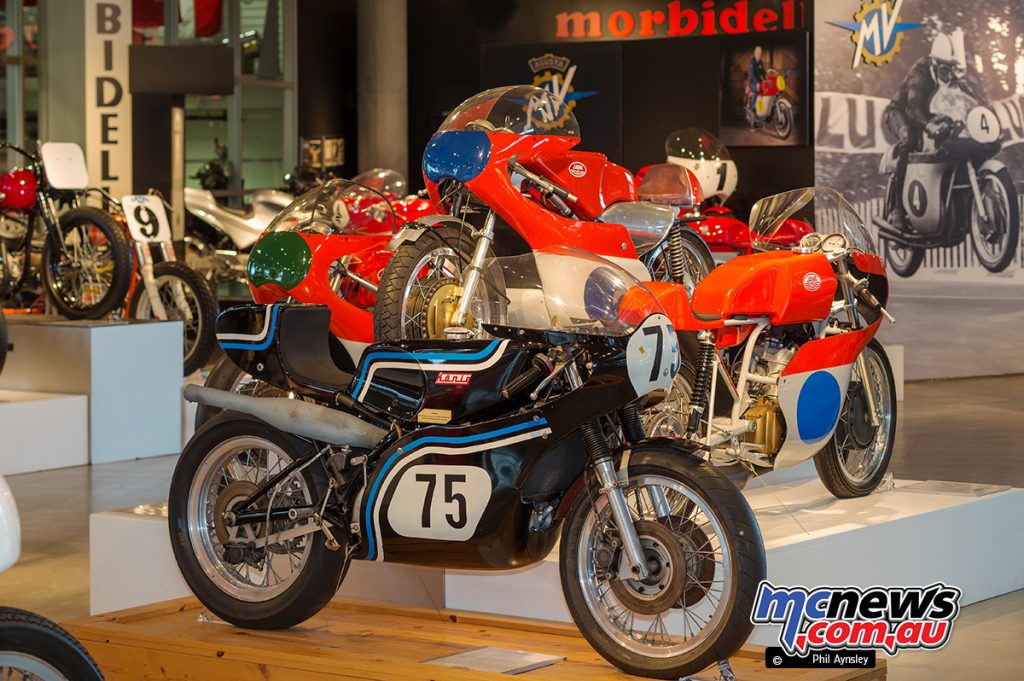
The König burst onto the race scene in 1969 as one of the first competitive premier class 2-strokes and used such advanced features as disc valves, water cooling and expansion chamber exhausts. Originally used in racing motorboats, the flat four design was almost entirely adapted for motorcycle use by Kiwi Kim Newcombe.
Not only did he do most of the development & testing he also raced the bike in the 1972 & 73 championships – despite never competing on asphalt before! In ’72 he scored two 3rd places (behind Agostini) before injury curtailed his season, finishing 10th.
In ’73 he had a 1st, 2nd & two 3rd places before his death racing in a non-championship event in England. He posthumously placed 2nd in that year’s 500cc championship. König powered sidecars won the 1974-5-6 championships. This 1976 bike made 85hp @ 9,800rpm and had a top speed of 270kph.
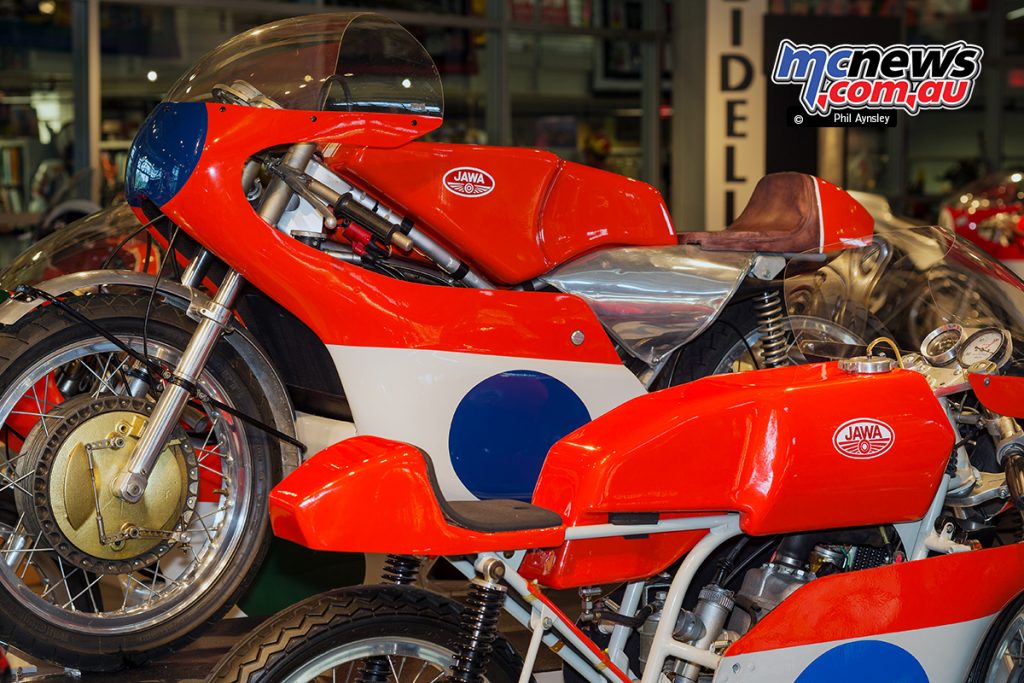
The three red two-stroke Jawas consist of a 1968 350cc single (50hp at 9800rpm, 88kg), 1970 R67 350cc water-cooled V-4 (70hp @ 13,000rpm, 120kg) and a 1977 250cc water-cooled twin which was very much a Yamaha copy (44hp at 12,000rpm, 118kg). While fast, the Jawas proved fragile and didn’t pose a consistent threat to the more established manufacturers.
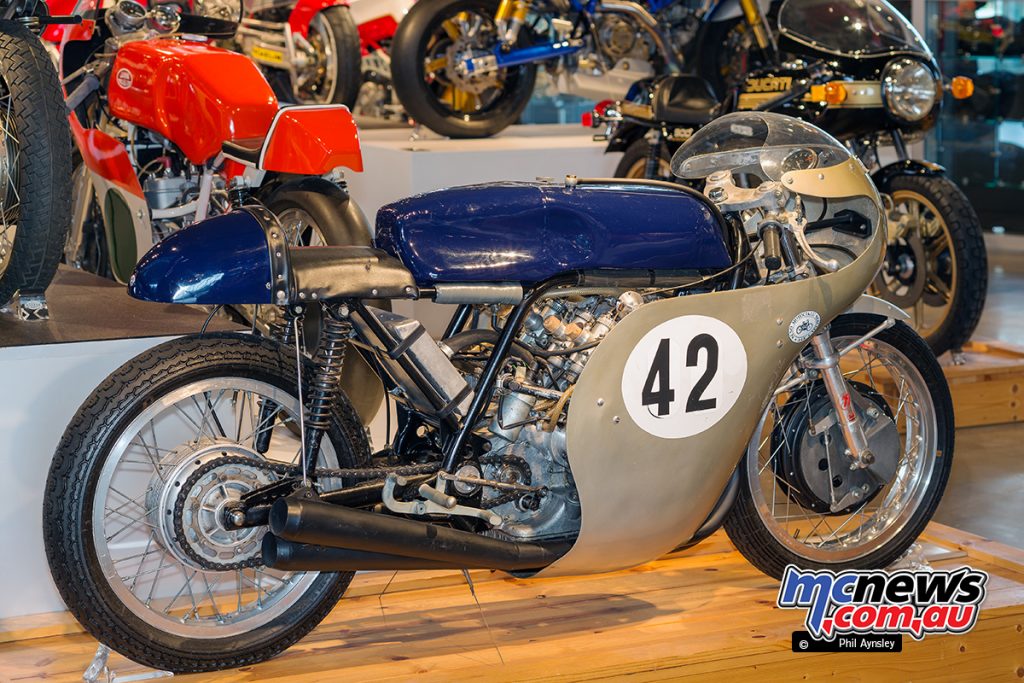
A real rarity! This 1964 Vostok C364 is a 350cc GP machine that supposedly made 59hp at 13,000rpm (more than Jim Redman’s 350/4 Honda!). It was the first Russian four-cylinder race bike and while almost only ever competing in Soviet block countries did manage two third place finishes during the 1964 and 19 65 world championships. A 500cc version appeared in 1968.

Four factory Honda CR750s were raced at the 1970 Daytona 200 with Dick Mann winning the race on one. American Honda later made an extensive 200 piece “Race Kit” available through a few selected dealers to convert a CB750 into a CR. This is one of those “Kit Bikes” painted as Mann’s bike.

1962 Honda CR110, 50cc DOHC.

1962 saw the introduction of the first Honda production racers. This 125cc RC93 twin used a gear-driven DOHC four valve per cylinder design that provided over 16hp at 11,500rpm. Top speed was 180km/h…

This particular XR750 was originally built for AMA dirt track competition, ridden by Bart Markel. It was converted to road racing specifications and shipped to Italy for use by Renzo Pasolini in European Formula 750 events. 90hp. Top speed 260km/h.
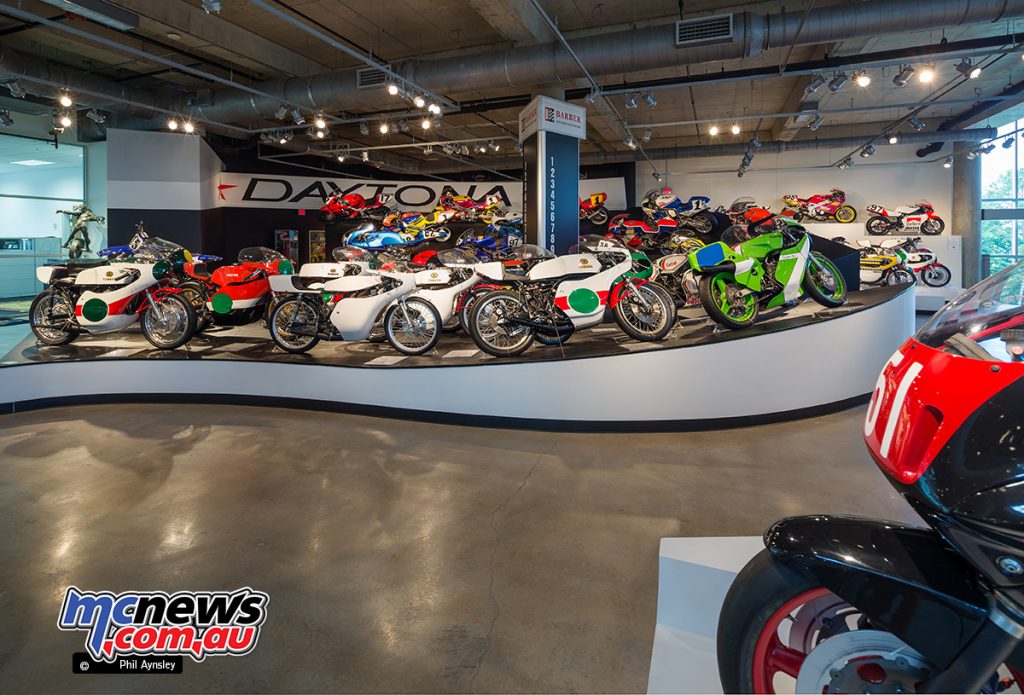
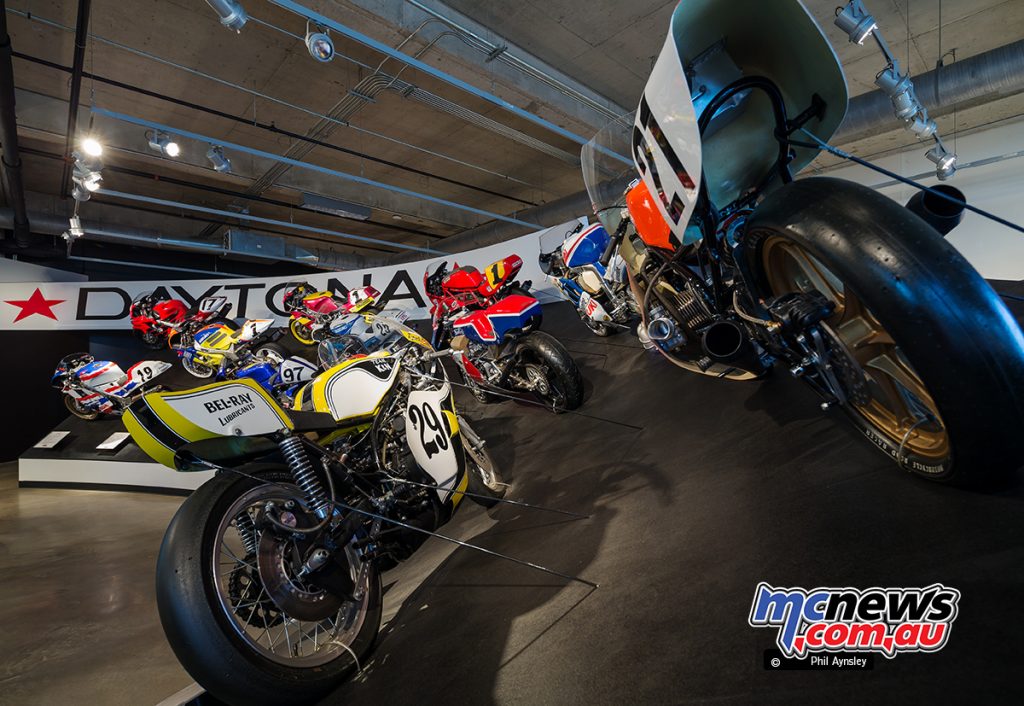
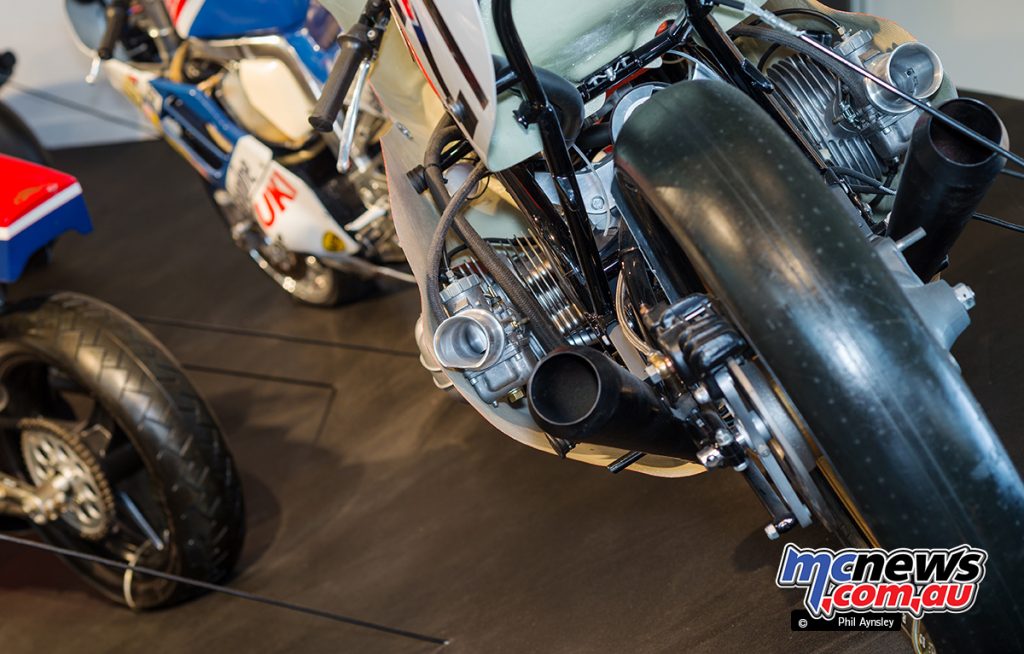
Bikes on the “Daytona banking”.
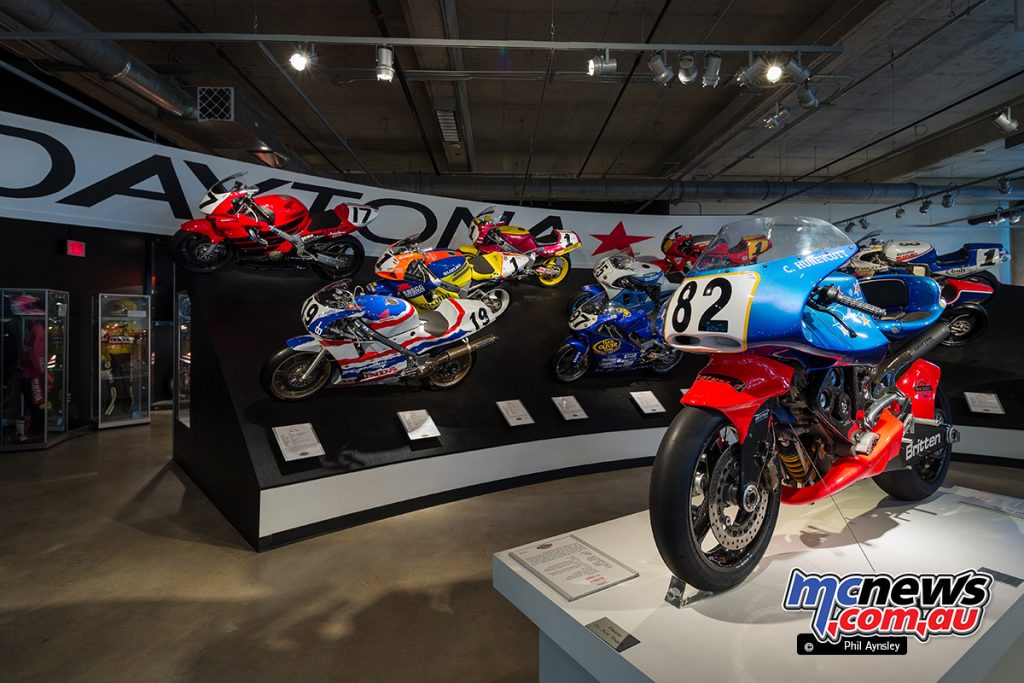

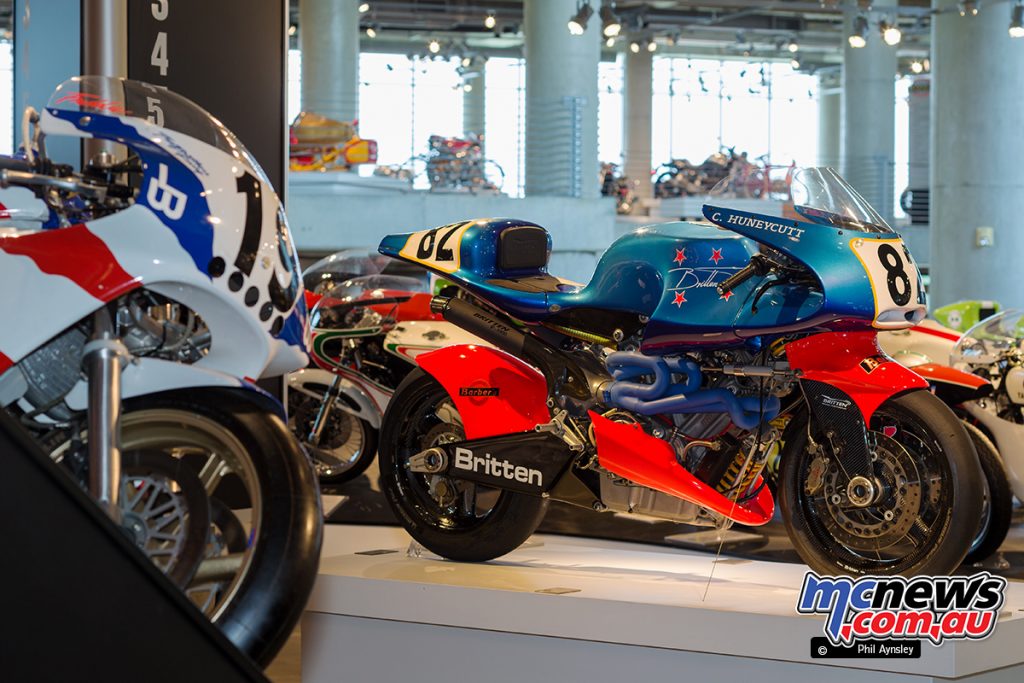
Britten No. 7 takes pride of place in front of the banking.
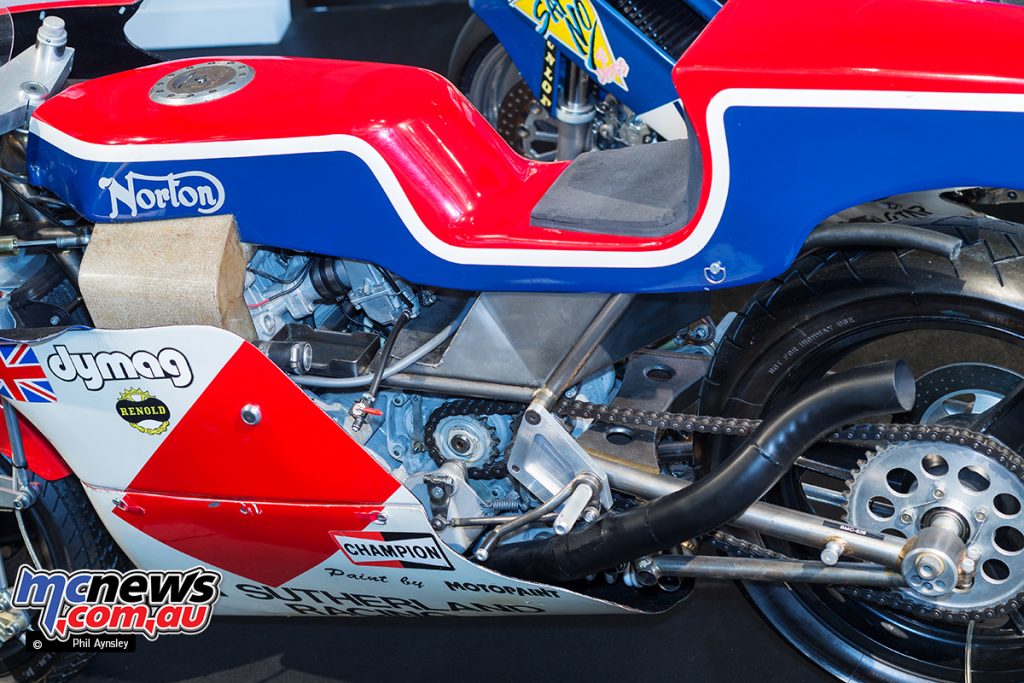
The 750cc P86 Challenge was a collaboration between Norton and Cosworth – who used much of their F-1 DFV engine expertise in the design. Work started in 1973 but a combination of lack of funds and over conservative design requirements by Norton resulted in an overweight (88kg, 34kg of it rotating) motor.
The four prototypes and about 30 motors were sold off when NVT Engineering closed in 1978. This bike uses a modified version of the original frame and was raced during the early ‘80s. 90hp at 9,500rpm meant a top speed of 260km/h.

A 1974 BMW F-1 1000 and 1974 Yamaha TZ750A.
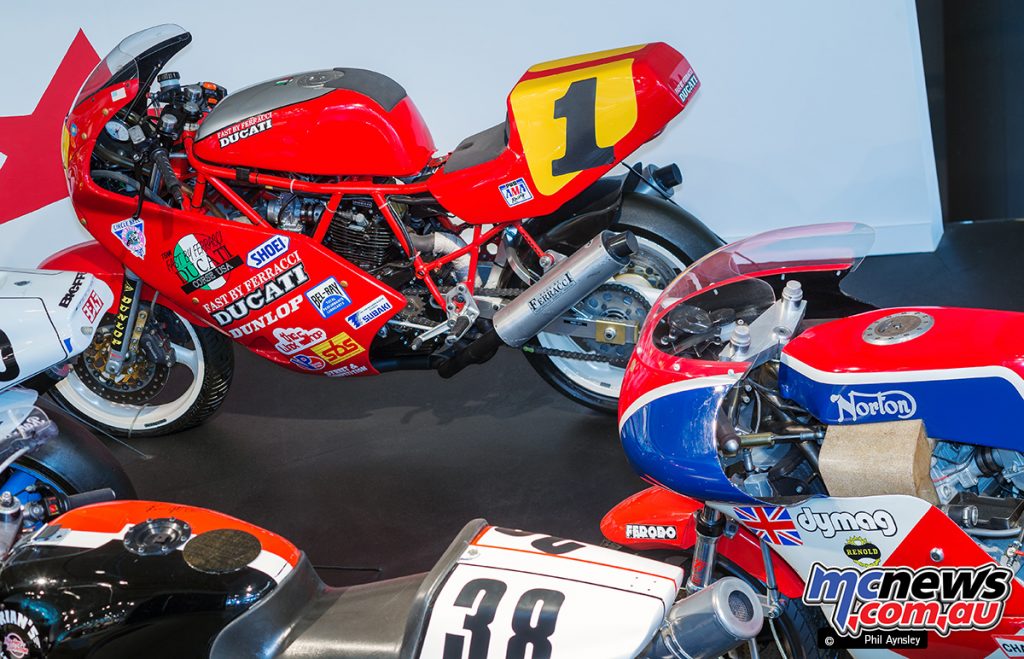
1990 Ducati 750 Sport.

The Kawasaki KR350, together with its KR250 sibling, won eight world championships (four each) between 1978 and 1982. The tandem twin, rotary valve design made 70hp at 12,500rpm and had a top speed of 260km/h.
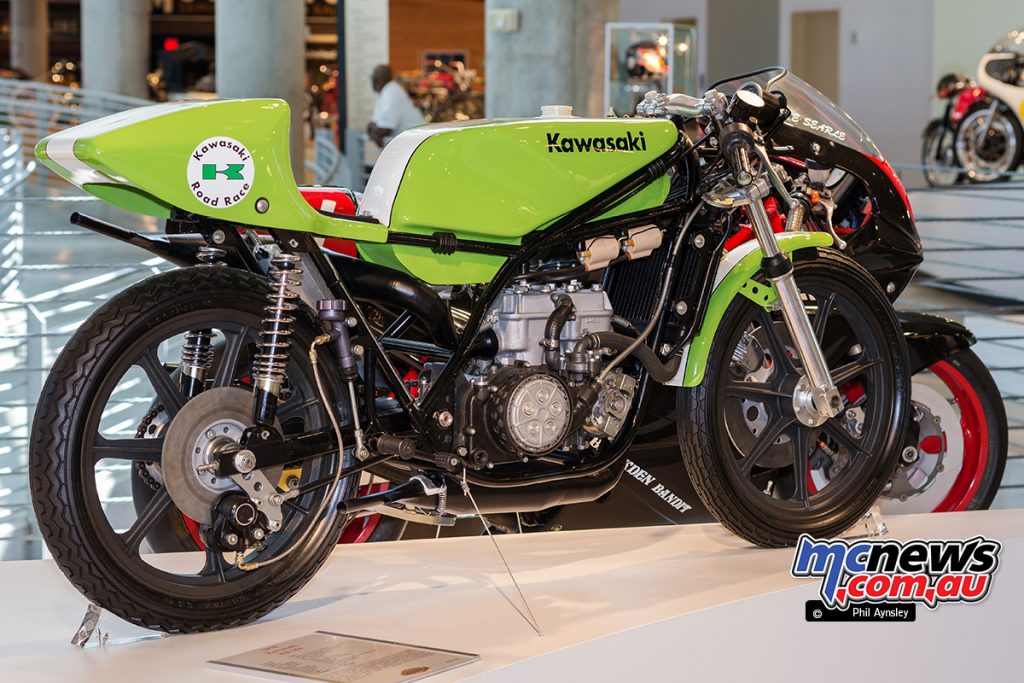
A 1976 Kawasaki KR250.
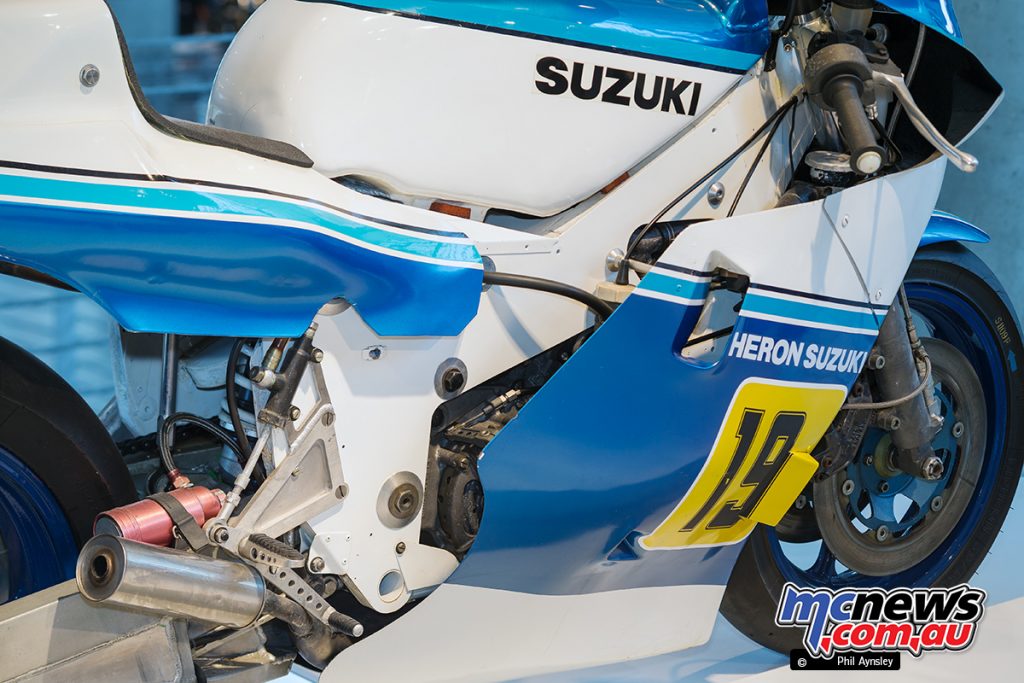
The first Ciba-Geigy Bonded Aeroweb framed prototype constructed for Team Heron in the UK. Only eight were built.
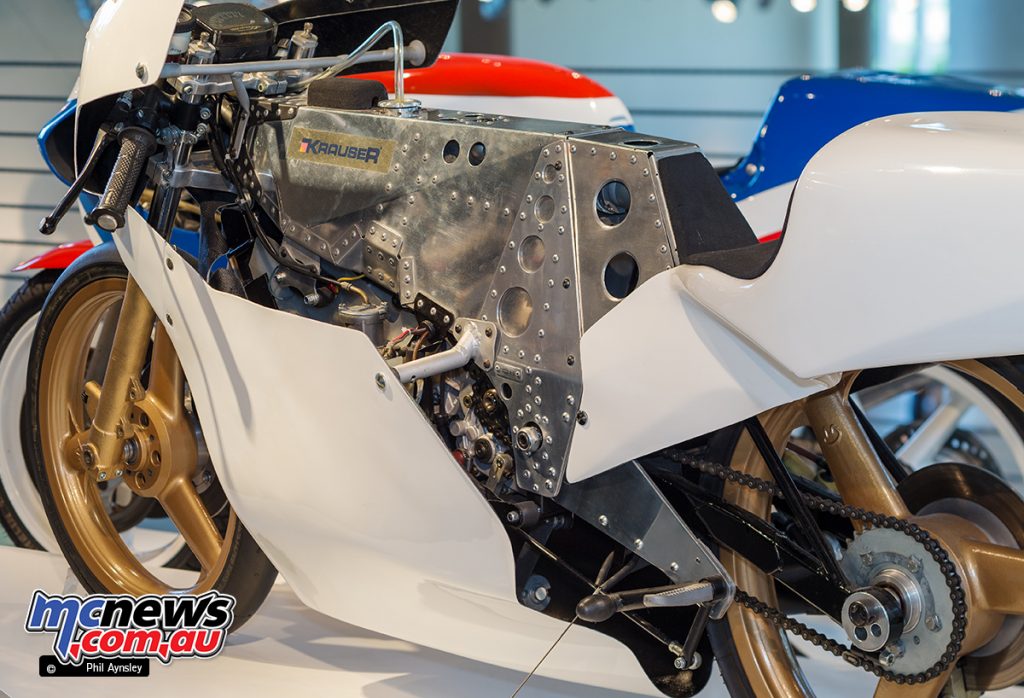
While referred to as the Krauser 80GP this bike started life as a Zündapp. It won the 1983 80cc European Championship (rider Hubert Abold), then the first 80cc World Championship the following year with Stefan Dorflinger riding.
The Krauser accessories company took over the bankrupt Zundapp race team in 1985 and again Dorflinger won the championship. 30hp was produced at 13,800rpm. Top speed was 220km/h.
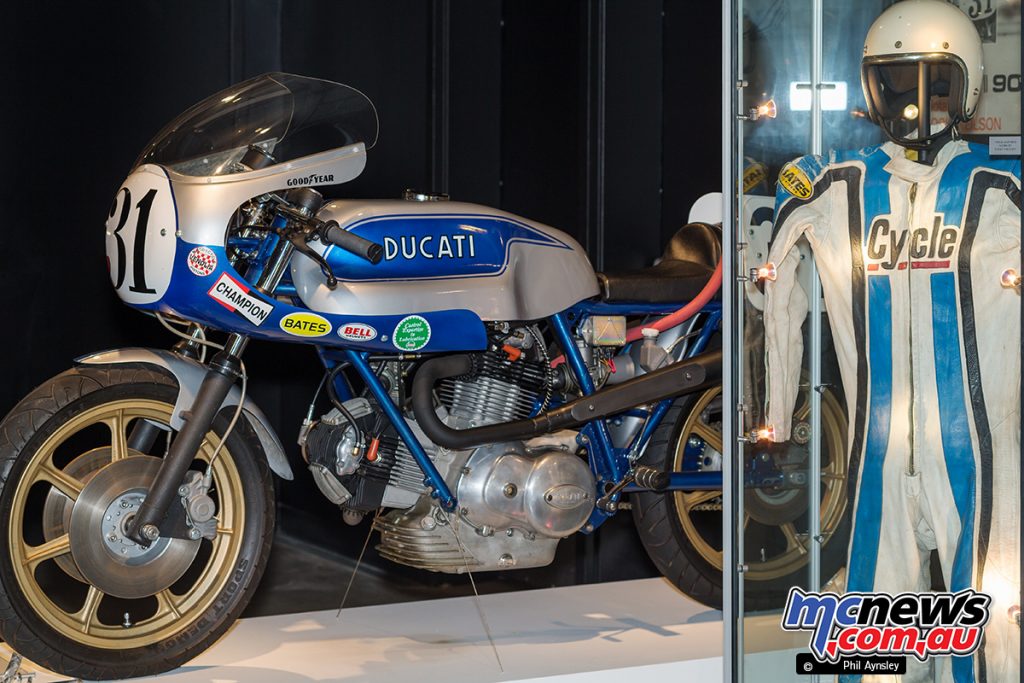

Commissioned specially for the museum, this replica is a faithful copy of the bike ridden by then Cycle magazine editor Cook Neilson (and developed by compatriot Phil Schilling) to victory in the 1977 Daytona Superbike race.
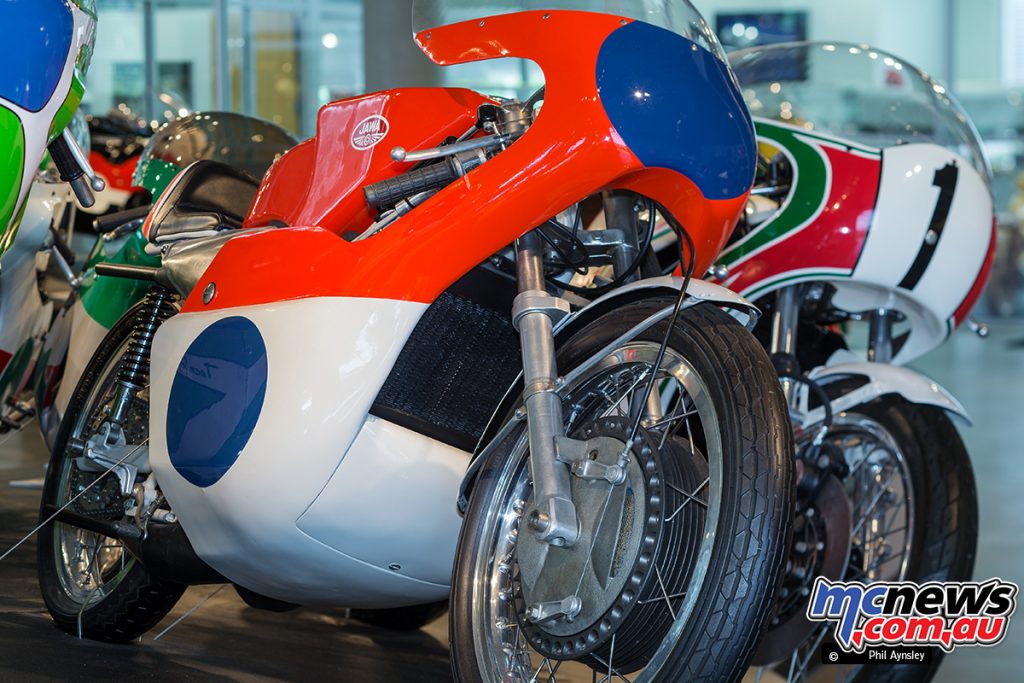
The R67 used a 344cc narrow angle V-4 with individual crankshafts. While very quick it was unreliable, being prone to seizures. 70hp at 13,000rpm meant a top speed of 260km/h.
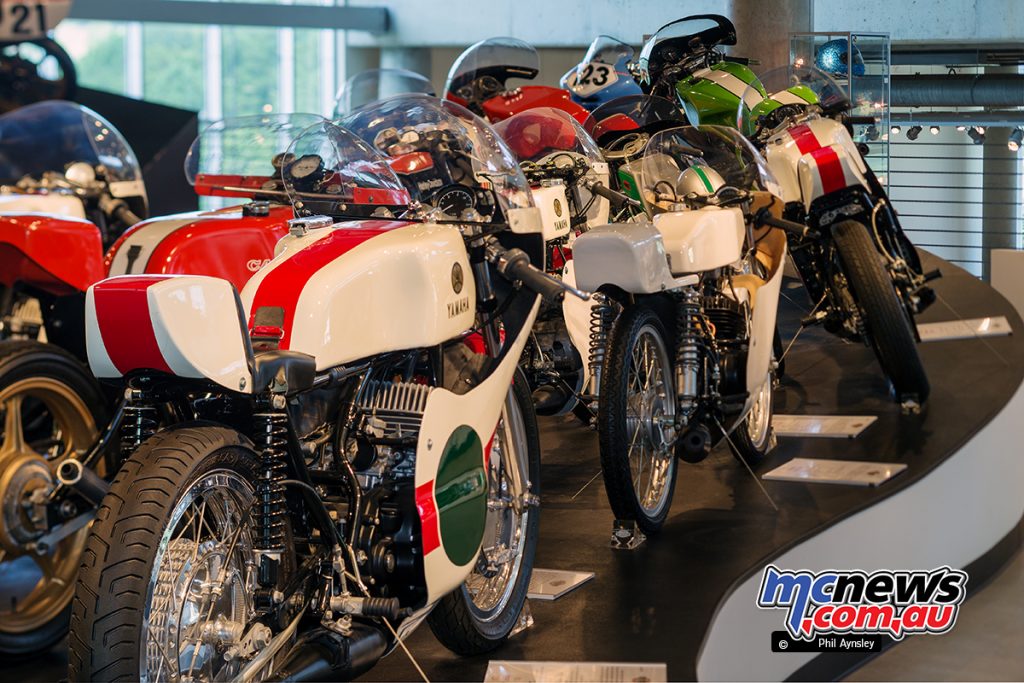
Yamahas on the lead up to the banking.
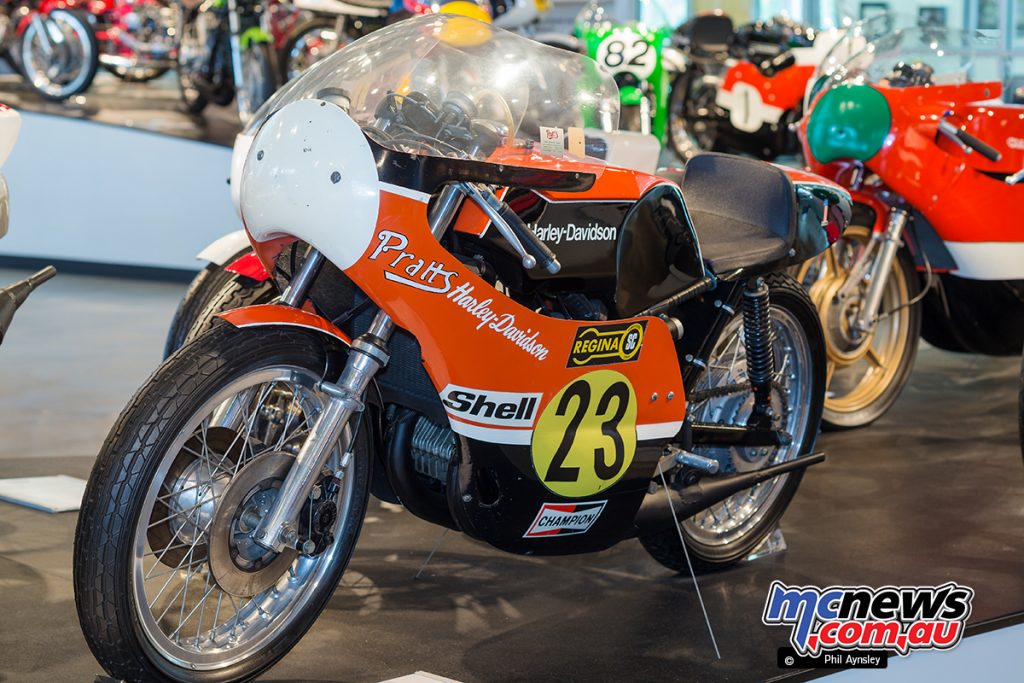
A 1974 Harley Davidson-Aermacchi RR391.
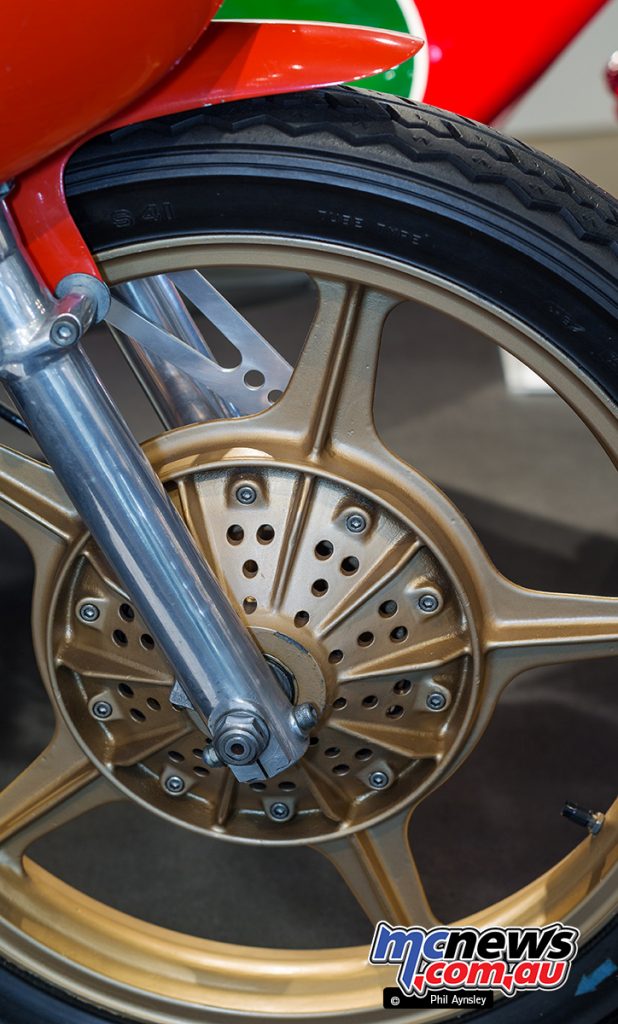
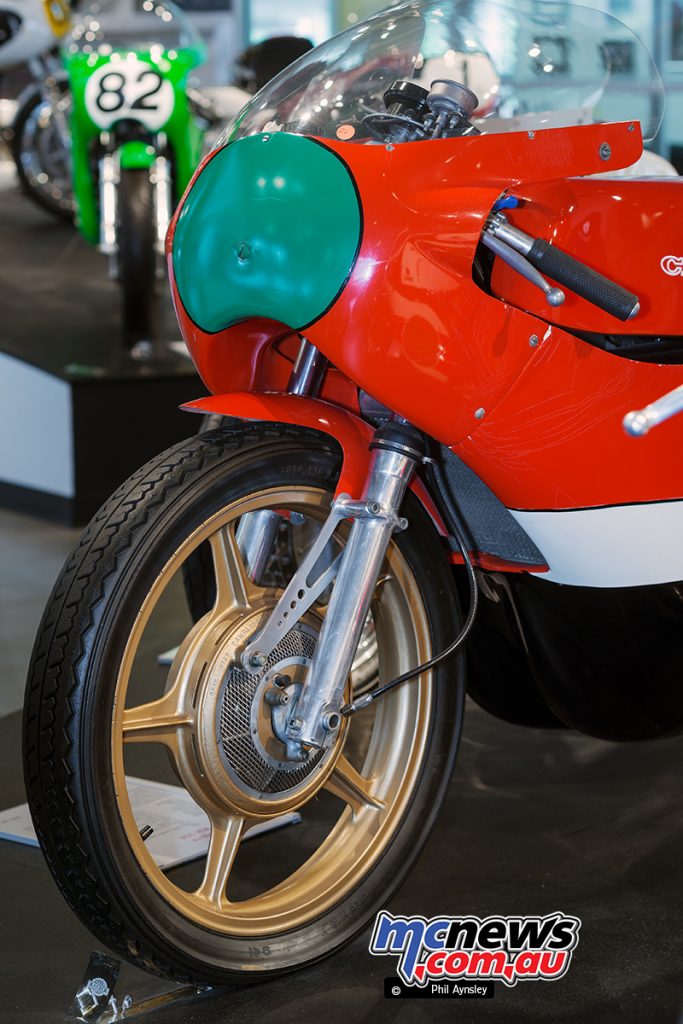
In 1978 Cagiva bought out the failed Harley Davidson-Aermacchi concern and continued their race effort. This RR250 used a Bimota frame and pictured here, the Campagnolo conical front brake. The RR250 won the 250cc world championship in 1974, 1975 and 1976. 58hp was on tap at 12,000rpm, with a top speed of 250km/h.
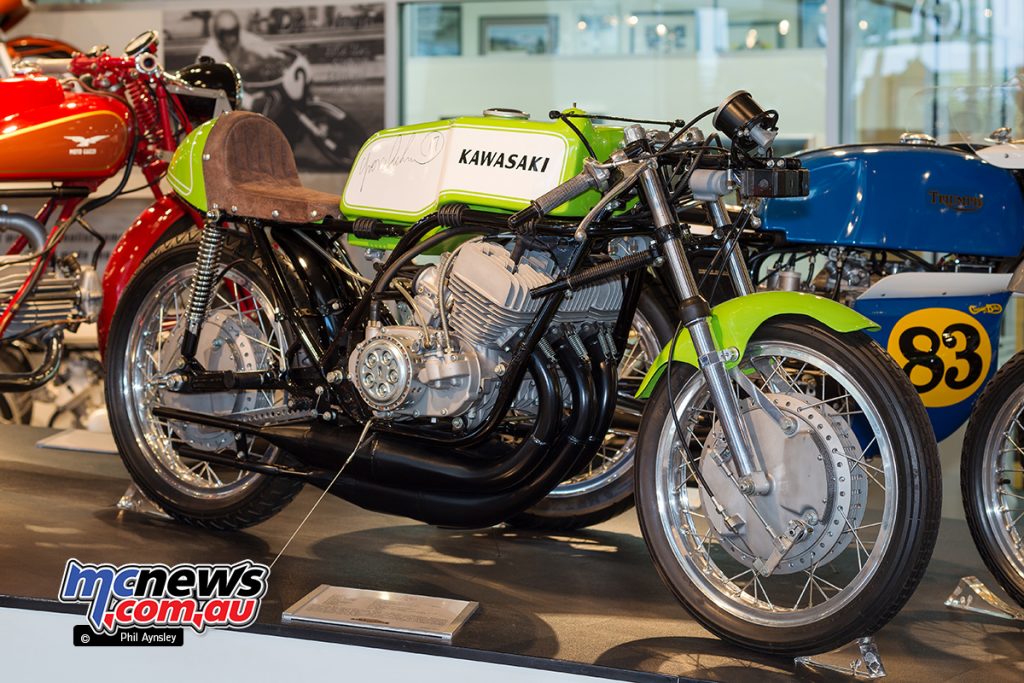
1972 Kawasaki H1RA 500cc.
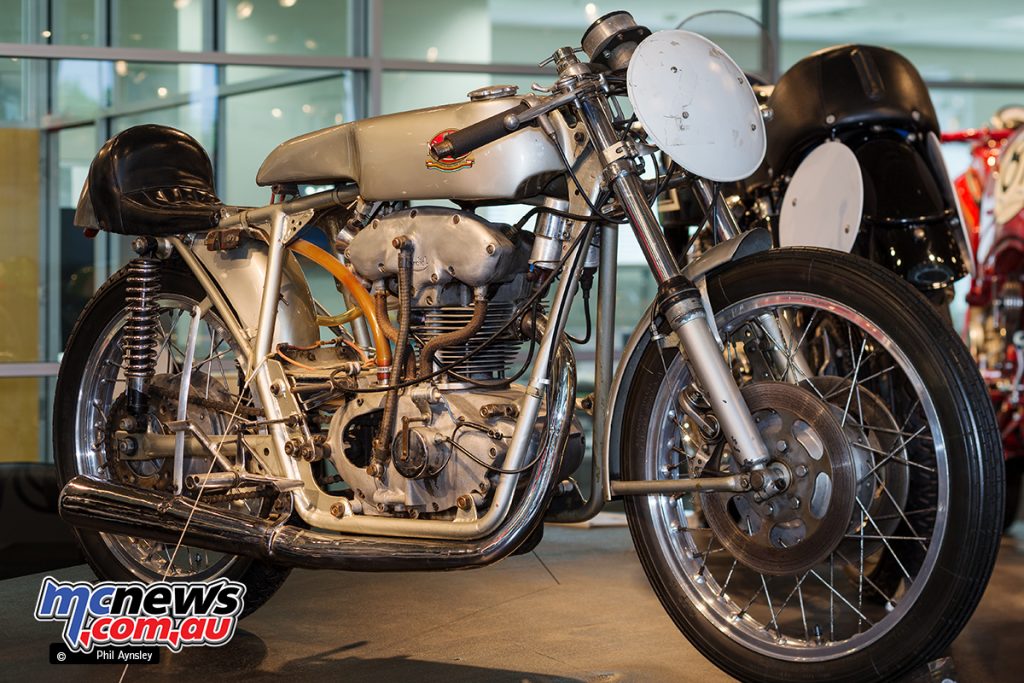
A famous name in GP racing is F. B. Mondial. This their 1956 125cc DOHC bike which only raced that one year in this form. Earlier versions of the 125 had the flywheel mounted externally, while the 1957 version changed from the short vertical bevel shaft driving the camshafts to a cascade of gears, still on the right hand side of the motor.
The mechanical disc brakes were used on the unsuccessful 250GP twin of 1956 and so can be fitted for current vintage racing. Power was 17hp at 12,000rpm, with a top speed of 177km/h.

A 1967 Aermacchi Ala D’oro 250cc.
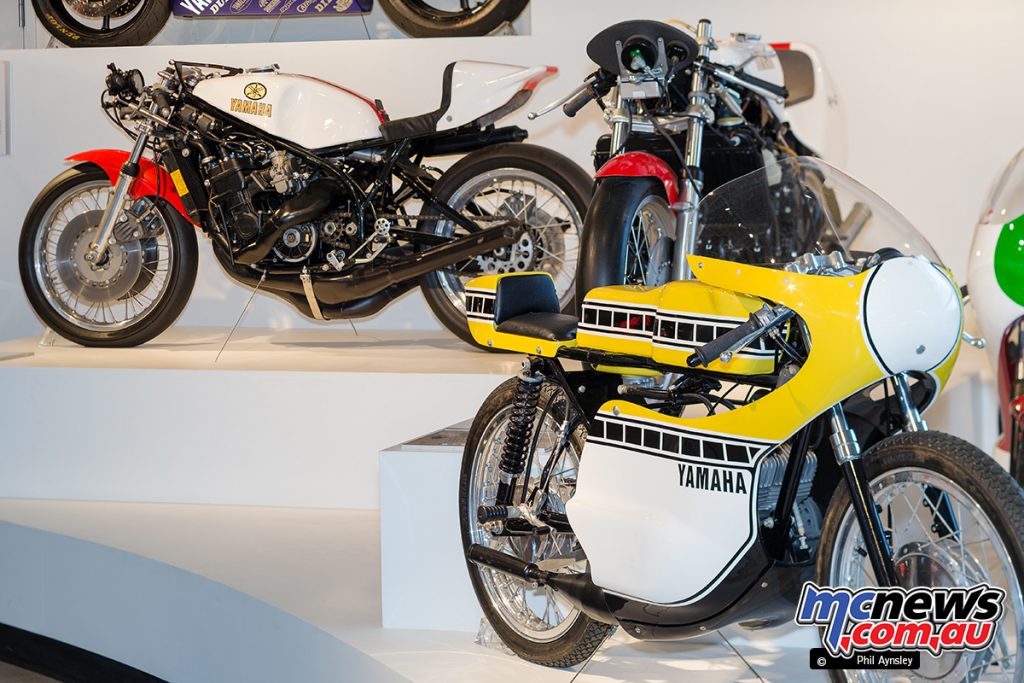
From front to back: 1971 Yamaha TA125, 1980 Yamaha TZ500G, 1979 Yamaha TZ750F.
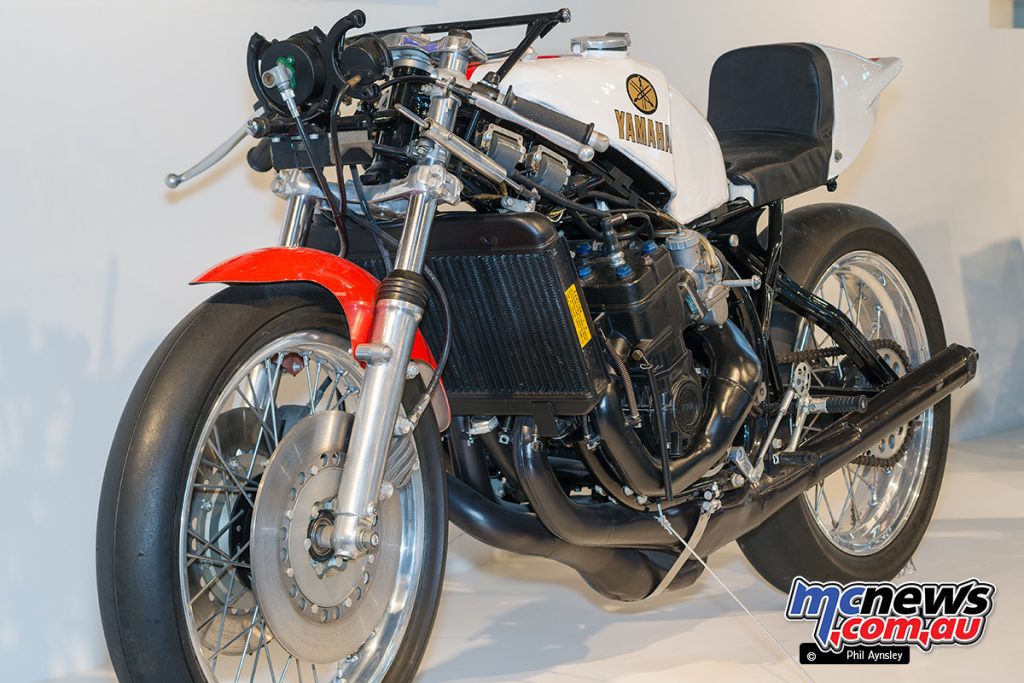
The final version of the famous TZ 750 was this F model from 1979. It was closely based on the factory OW-31 but without the titanium and magnesium fixtures. A total of 567 TZ 750s were built between 1973 and 1979. Power was 120hp at 11,000rpm, with a top speed of 290km/h.
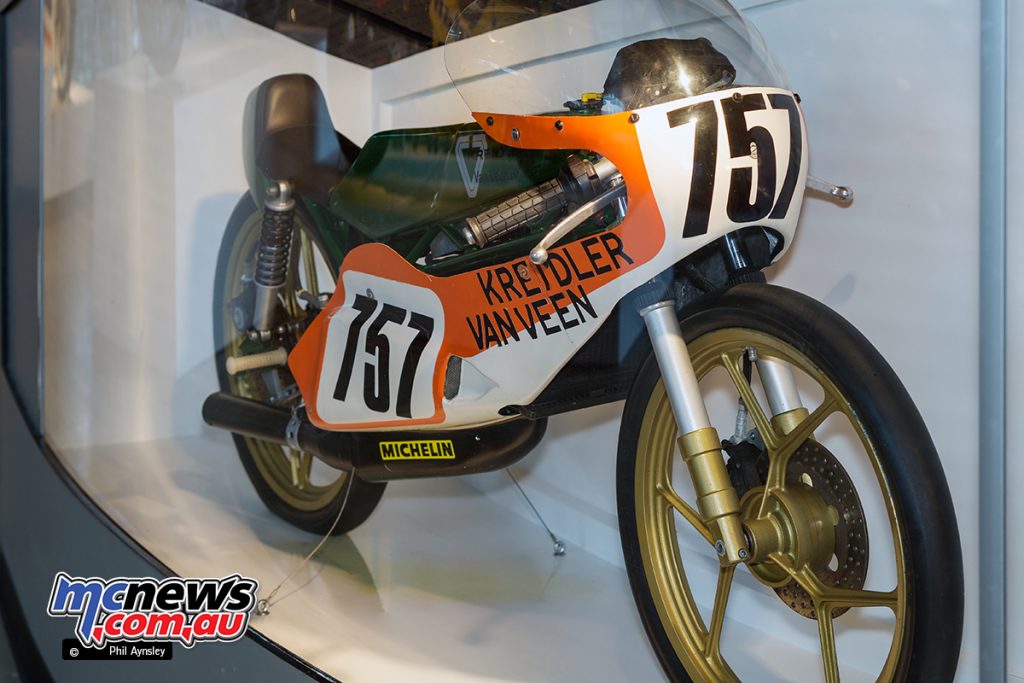
Van Veen were the Dutch importer of Kreidler mopeds and from 1968 were heavily involved with Kreidler racing efforts. They won six 50cc constructors’ and seven riders’ world championships between 1971 and 1982. 22.5hp at 17,500rpm allowed a top speed of 210km/h.
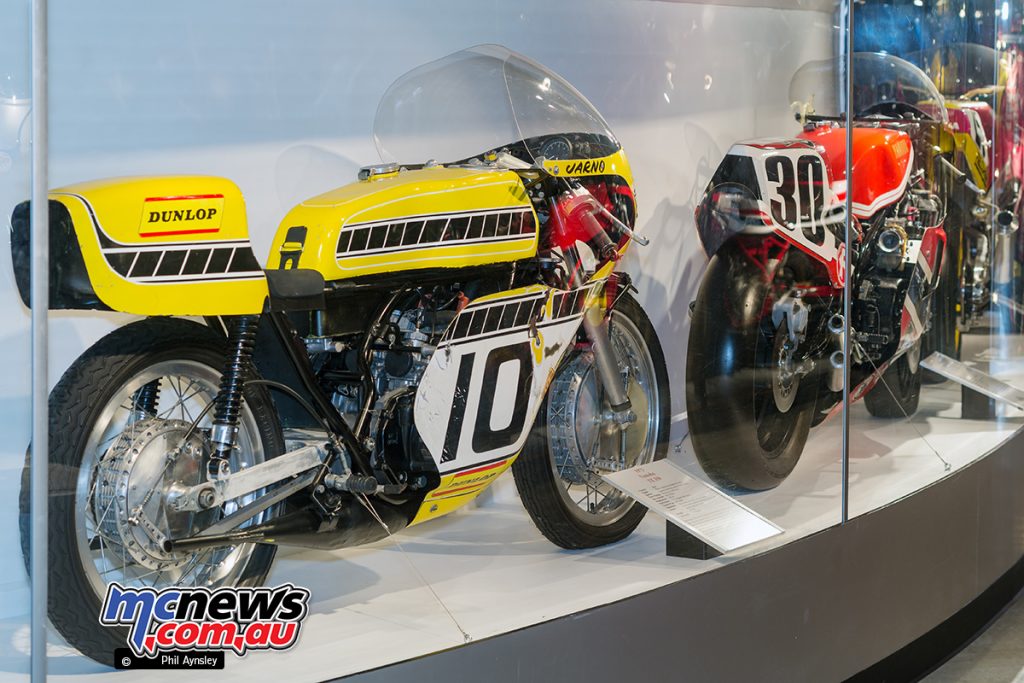
This is Jarno Saarinen’s 1973 Daytona 200 winning Yamaha TZ 350. The TZ’s water cooling resulted in a boost from 55 to 65hp (at 9,500rpm) compared to the air cooled TR model. Top speed 233km/h.
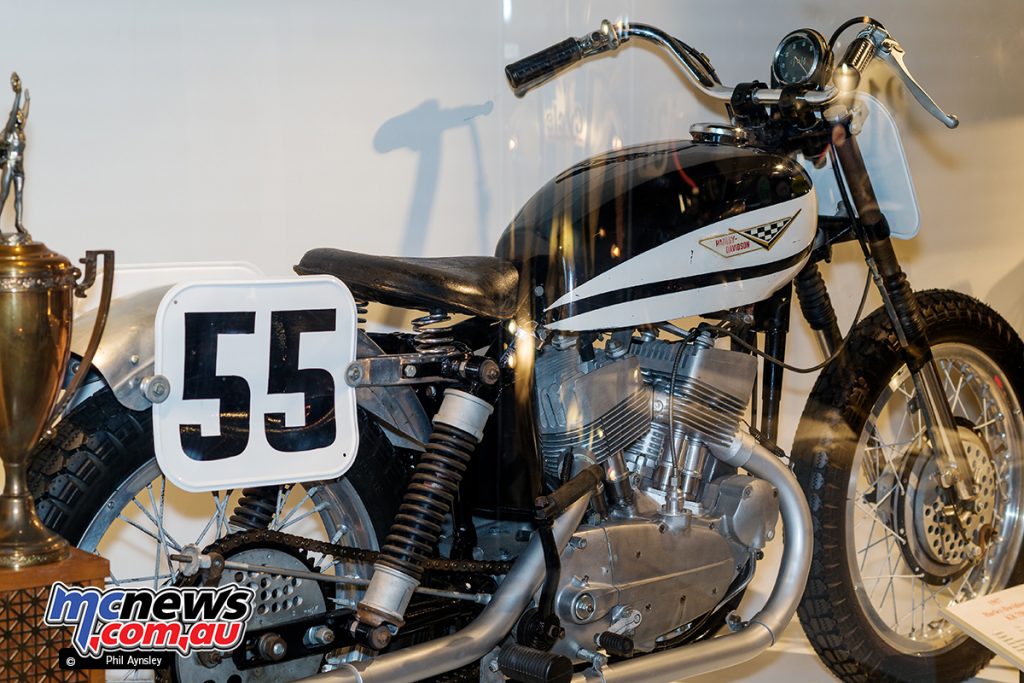
Dale Singleton’s 1981 Daytona 200 winning bike.
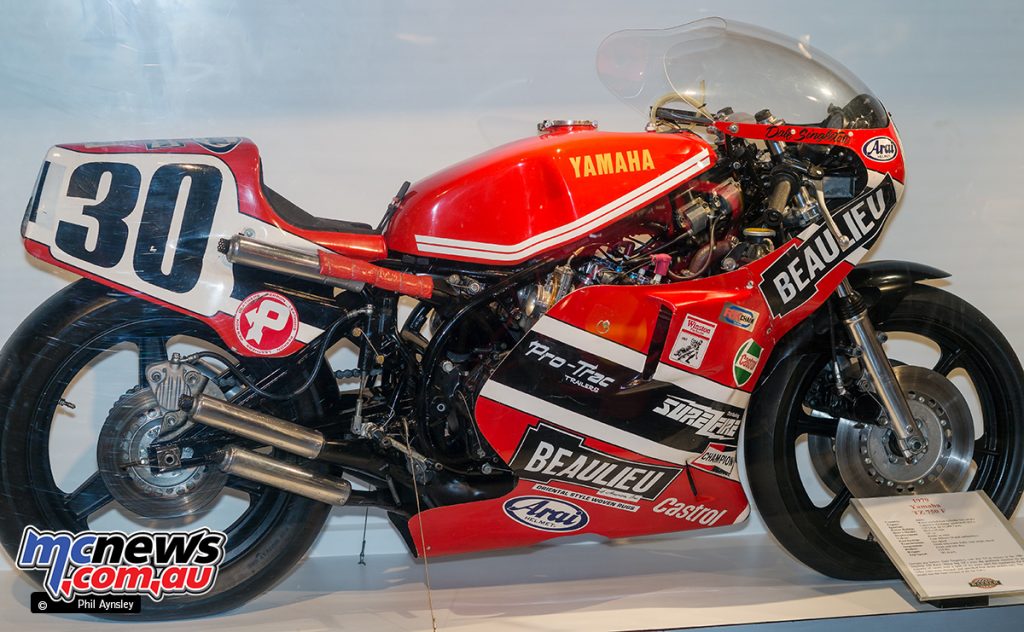
Roger Reiman rode this Harley Davidson KR 750 to victory in the first Daytona 200 race in 1961. Earlier it had been raced on the Daytona beach itself. Power was 50hp at 6,000rpm. Top speed 210km/h.
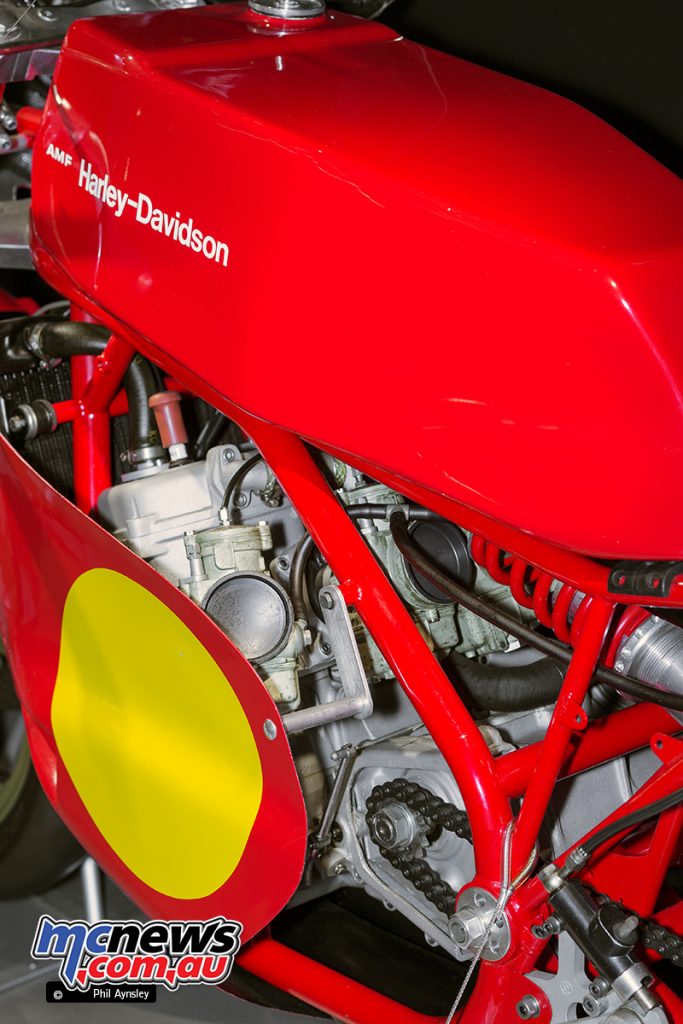

Development of the twin cylinder 500 (fitted with four carburettors) started in 1973 but was shelved after the death of team rider Renzo Pasolini. The project was revived in 1975 with Aermacchi building 18 engines but when the project folded 16 were installed in HD frames and sold off to privateers.
Two were bought by Bimota and fitted into frames of their own design. As seen here one used this unusual front brake in which the discs were geared to rotate in the opposite direction to the wheel. Four calipers were fitted. 90hp at 9,000rpm. Top speed 280km/h.
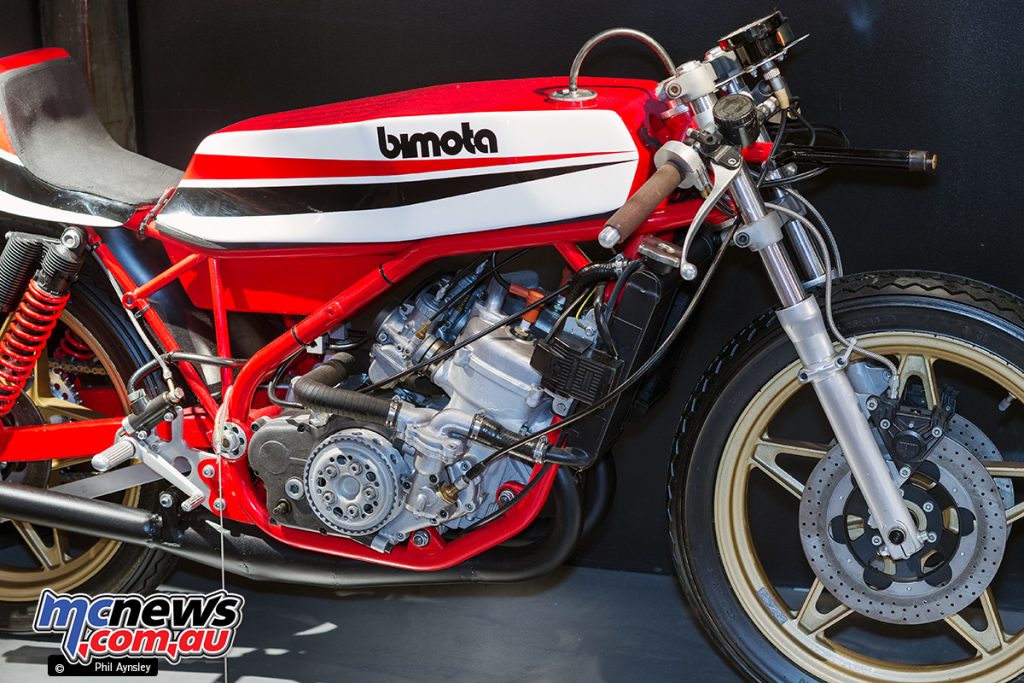
A 1975 Bimota 250RR.























